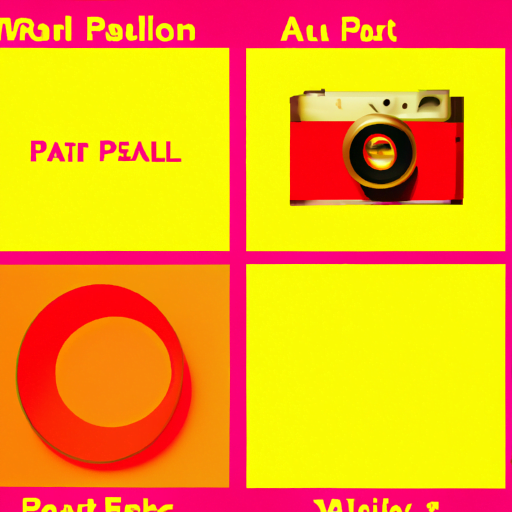
-
Table of Contents
Paul Rand: The Master of Modern Graphic Design

Paul Rand is widely regarded as one of the most influential graphic designers of the 20th century. His innovative approach to design, emphasis on simplicity, and ability to create timeless logos and visual identities have left an indelible mark on the field of graphic design. In this article, we will explore the life, work, and lasting impact of Paul Rand.
Early Life and Education
Paul Rand was born as Peretz Rosenbaum on August 15, 1914, in Brooklyn, New York. Growing up in a working-class family, Rand developed an early interest in art and design. He attended the Pratt Institute in Brooklyn, where he studied under influential designers such as George Tscherny and Frederick Kiesler.
During his time at Pratt, Rand was exposed to the principles of the Bauhaus movement, which emphasized the integration of art, craft, and technology. This exposure would later shape his design philosophy and approach.
The Birth of a Design Legend
After completing his education, Rand began his career as a freelance designer, working on various projects for clients in the publishing and advertising industries. However, it was his work in the field of logo design that would catapult him to fame.
In 1956, Rand was commissioned to create a logo for IBM, a relatively unknown computer company at the time. He came up with a simple, yet powerful design consisting of the company’s initials in a bold, horizontal striped typeface. This iconic logo, which is still in use today, helped establish Rand as a master of corporate identity design.
Throughout his career, Rand created logos for numerous other well-known companies, including ABC, UPS, and Westinghouse. His ability to distill complex ideas into simple, memorable symbols set him apart from his contemporaries.
The Principles of Paul Rand’s Design
Paul Rand’s design philosophy was rooted in simplicity, clarity, and visual impact. He believed that a successful design should communicate its message quickly and effectively, without unnecessary embellishments.
One of Rand’s most famous quotes encapsulates his approach to design: “Simplicity is not the goal. It is the by-product of a good idea and modest expectations.” He believed that a strong concept was the foundation of any successful design, and that simplicity was the natural result of a well-executed idea.
Another key principle of Rand’s design was the use of visual contrast. He often juxtaposed elements such as color, shape, and scale to create visual interest and impact. This can be seen in his logo designs, where he used bold, geometric shapes and vibrant colors to create memorable and distinctive identities.
The Legacy of Paul Rand
Paul Rand’s influence on the field of graphic design cannot be overstated. His work has inspired countless designers and continues to be celebrated for its timeless quality and innovative approach.
One of the most significant aspects of Rand’s legacy is his emphasis on the importance of a strong concept in design. He believed that a design should not only be visually appealing but also communicate a clear message or idea. This emphasis on conceptual thinking has had a profound impact on the field of graphic design, shaping the way designers approach their work.
Furthermore, Rand’s approach to corporate identity design revolutionized the way companies think about their visual branding. His logos, such as the iconic IBM logo, demonstrated the power of a simple, memorable symbol in creating a strong brand identity. Today, many companies strive to achieve the same level of simplicity and impact in their visual identities.
Conclusion
Paul Rand’s contributions to the field of graphic design are immeasurable. His innovative approach, emphasis on simplicity, and ability to create timeless logos and visual identities have left a lasting impact on the industry. His work continues to inspire and influence designers around the world, reminding us of the power of a well-executed idea and the importance of simplicity in design.
